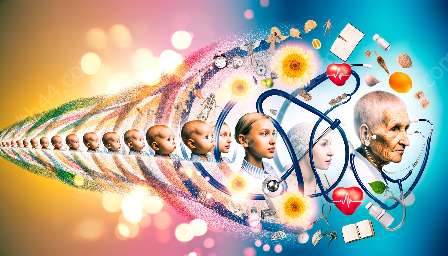Adolescence marks a crucial phase in human development, encompassing significant physical, cognitive, and emotional changes. Understanding the intricacies of adolescence is essential in the fields of lifespan development and health education & medical training. This article delves into the multifaceted aspects of adolescence and its impact on individuals' well-being.
Physical Development in Adolescence
One of the hallmark features of adolescence is the rapid physical growth and maturation. Puberty, the defining biological process of adolescence, brings about a surge of hormonal changes that lead to various physical transformations such as the development of primary and secondary sexual characteristics. These physical changes not only signify the transition to reproductive maturity but also influence adolescents' body image, self-esteem, and social interactions.
Cognitive Development and Adolescent Brain
Amidst the physical changes, adolescence also witnesses profound cognitive development. The brain undergoes a significant reorganization, with areas responsible for higher-order thinking, decision-making, and emotional regulation experiencing notable development. Adolescents' cognitive abilities, including complex reasoning, introspection, and long-term planning, continue to progress throughout this period. However, the simultaneous maturation of emotional and impulse control regions sometimes causes a dissonance between cognitive capabilities and behavioral regulation, thereby impacting decision-making and risk-taking behaviors.
Emotional and Social Development
Emotionally, adolescents are more susceptible to experiencing intense and fluctuating emotions due to the ongoing neural and hormonal changes. They strive to establish their identity, seek autonomy, and form deeper social connections beyond the family unit. The tumultuous nature of emotions, coupled with the need for independence, often leads to conflicts with parents and peers. Navigating through these emotional challenges is vital for adolescents to develop healthy relationships, emotional resilience, and coping strategies.
Interactions with Lifespan Development
The period of adolescence holds critical significance in the broader continuum of human lifespan development. It acts as a bridge between childhood and adulthood, laying the foundation for future achievements and well-being. A thorough understanding of adolescent development equips professionals in lifespan development to provide tailored interventions and support systems that can positively influence individuals' trajectories across the lifespan, enhancing overall quality of life.
Integration with Health Education & Medical Training
Health education and medical training intertwine with adolescent development to foster holistic well-being and address specific health concerns. Comprehensive health education programs offer adolescents vital knowledge and practices to maintain physical and mental well-being, promoting healthy lifestyle choices and risk reduction strategies. Moreover, medical professionals specializing in adolescent medicine play a pivotal role in addressing the unique healthcare needs of adolescents by providing specialized care, guidance, and preventive health services.
Conclusion
Adolescence embodies a period of profound growth and transformation, influencing individuals' physical, cognitive, emotional, and social dimensions. By comprehensively understanding the complexities of adolescence, professionals in lifespan development and health education & medical training can effectively contribute to promoting positive outcomes and well-being for adolescents, setting the stage for a healthy and fulfilling adulthood.


